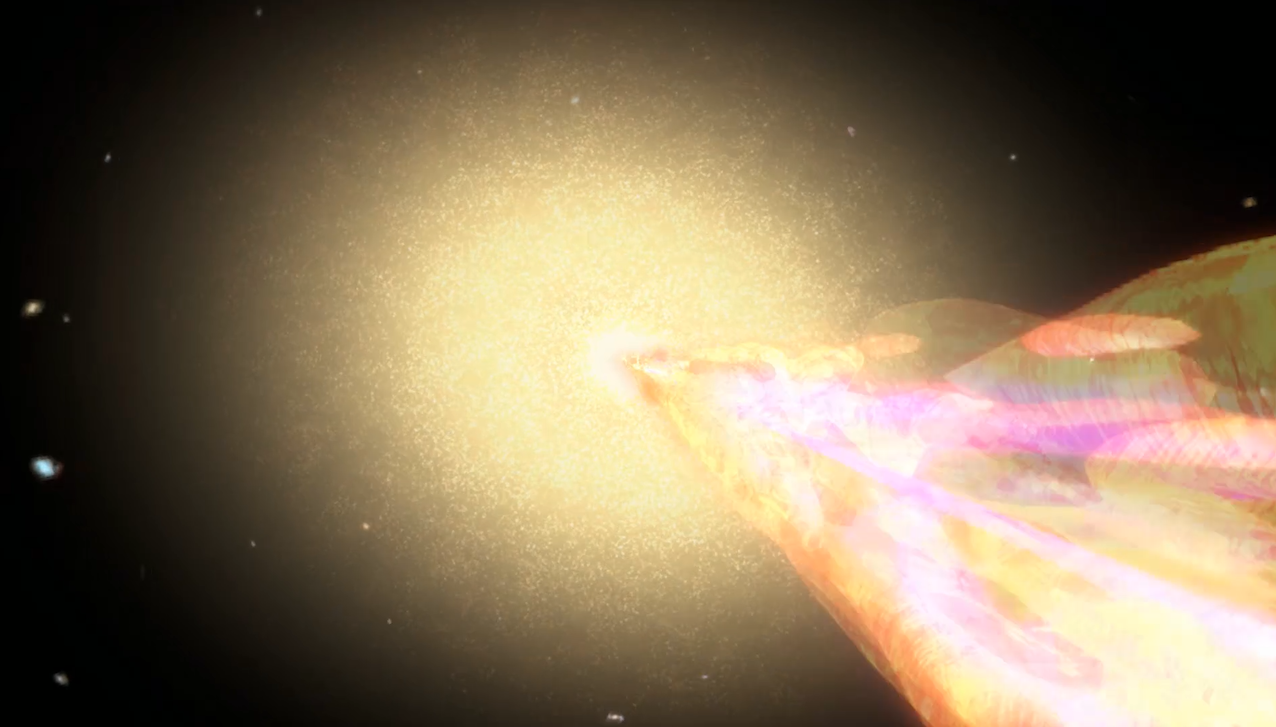
The spectrum of the most intense gamma-ray burst ever, detected in 2022, was found to contain a characteristic never observed in fifty years of research: an emission line, which is formed when a physical process emits radiation at a specific energy (or wavelength). This line was identified for the first time in a gamma ray burst (GRB) by a young international group involving the three Italian Institutes INAF, GSSI and INFN. The result, of great interest for research and for the understanding of GRBs, was published on 25 July in the journal “Science”. The study revolves around GRB 221009A, the brightest gamma-ray burst ever observed (also known as BOAT or brightest of all time), detected on 9 October 2022. Indeed, gamma-ray bursts are among the most energetic events in the universe, capable of releasing more energy in seconds than the Sun can emit in its entire lifetime. Gamma rays, which are a very high-frequency form of light, arise in plasma jets launched into space at close to the speed of light, and are emitted by neutron stars or newly formed black holes. Events such as GRB 221009A are possible when the core of a massive star runs out of fuel, collapses and forms a black hole that launches two jets in opposite directions. The gamma rays are detectable only when one of the jets points directly toward Earth. Although the discovery of GRBs dates back to fifty years ago, many of their aspects are still little known. The discovery thus represents an opportunity to understand the dynamics and composition of GRB jets, which have never been fully understood. There are three possible explanations proposed by the research team, but the most likely is the annihilation of matter and antimatter inside the GRB jet. This discovery, led by young researchers involving many PhD students, demonstrates how observations of GRBs continue to amaze us, revealing the physics governing these events, among the most energetic and mysterious in the universe.






